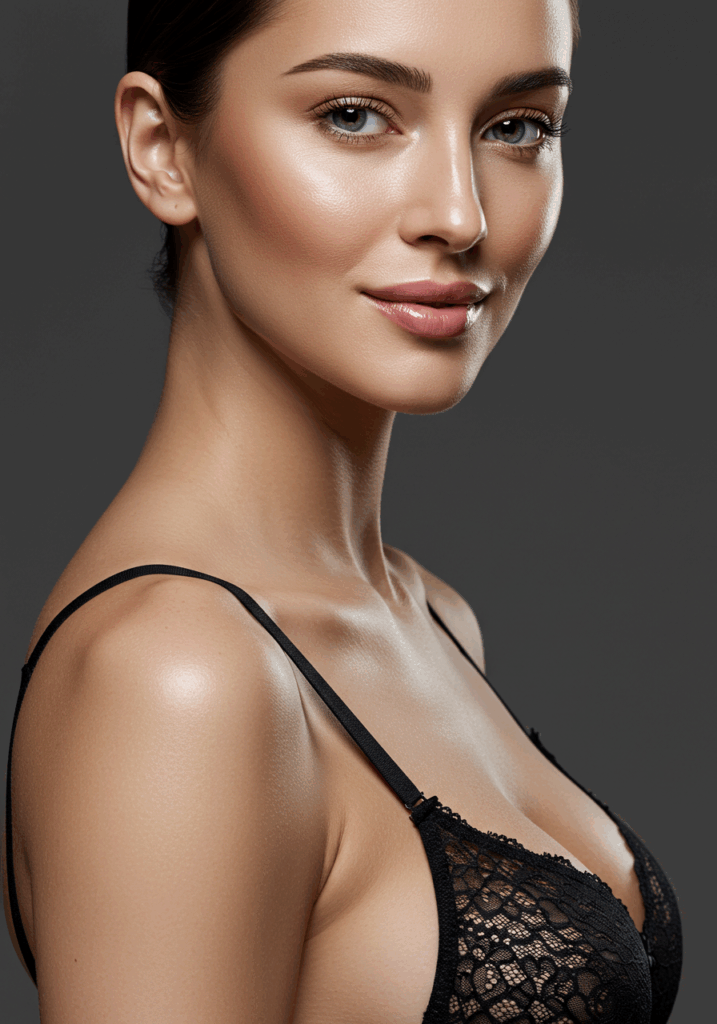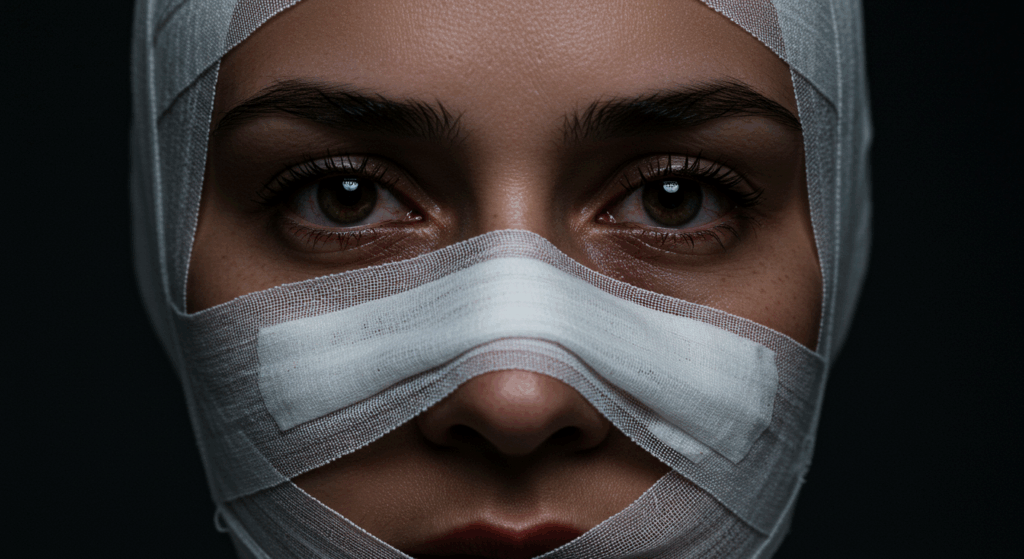تكبير الخدود هو حجر الزاوية تأنيث الوجه الجراحة (FFS)، وتحويل ملامح الوجه الذكورية إلى ملامح أكثر نعومة وأنوثة. النساء المتحولات جنسيا بالنسبة للأفراد غير الثنائيين، لا يقتصر هذا الإجراء على الجانب الجمالي فحسب، بل يهدف أيضًا إلى مواءمة المظهر الجسدي مع الهوية الجنسية. ومع ذلك، قد يكون اختيار التقنية المناسبة أمرًا صعبًا. إذا اخترت الغرسات, تطعيم الدهون، أو الحشواتما هي المخاطر وأوقات التعافي والنتائج على المدى الطويل؟
في هذا دليل شامل مكون من 3000 كلمةنتعمق في كل جانب من جوانب تكبير الخدود في FFS، من الطرق الجراحية إلى نصائح التعافي، مما يضمن لك اتخاذ قرار واعٍ. سواء كنت تبحث لنفسك أو تدعم أحد أحبائك، فهذا الدليل هو مرجعك. مورد نهائي.

جدول المحتويات
فهم تكبير الخدود في جراحة تأنيث الوجه
لماذا يُعد تكبير الخدود أمرًا مهمًا في حالات FFS
تلعب عملية تكبير الخدود دورًا محوريًا في FFS لأن:
- توازن الوجه: يعمل على تخفيف خطوط الفك الزاوية الذكورية ويخلق وجهًا على شكل قلب، وهي علامة مميزة للأنوثة.
- المظهر الشبابي: ترتبط الخدود الممتلئة بالشباب والحيوية، وتعمل على مكافحة آثار الشيخوخة.
- التعبير العاطفي: يمكن لعظام الخد المعززة أن تجعل الوجه يبدو أكثر تعبيرًا وسهولة في التعامل.
العلم وراء تحديد ملامح الخدود الأنثوية
تشير الأبحاث إلى أن الوجوه الأنثوية تتميز عادةً بما يلي:
- عظام الخد أعلى وأكثر وضوحا.
- انتقال أكثر سلاسة من الخدين إلى الجزء السفلي من الوجه.
- خطوط الفك وبنية الذقن أقل بروزًا.
يهدف تكبير الخدود في حالات FFS إلى تقليد هذه السمات من خلال طرق جراحية أو غير جراحية. لمزيد من المعلومات حول مبادئ تأنيث الوجه، اطلع على دليلنا حول اختيار أفضل جراح FFS.

تقنيات تكبير الخدود: تحليل مقارن
هناك ثلاثة أساسيات التقنيات لتكبير الخدود في حالات FFS. لكلٍّ منها مزاياه ومخاطره والمرشحون المثاليون. فيما يلي مقارنة مفصلة:
| تقنية | وصف | الايجابيات | سلبيات | وقت الانتعاش | طول العمر |
|---|---|---|---|---|---|
| زراعة الخد | يتم وضع غرسات السيليكون الصلبة أو البولي إيثيلين المسامي جراحيًا فوق عظام الخد. | نتائج دائمة. أشكال وأحجام قابلة للتخصيص. ملمس ومظهر طبيعيان. | إجراء جراحي ذو مخاطر كامنة. فترة نقاهة أطول. احتمالية تحرك الزرعة. | 2-4 أسابيع | دائم |
| تطعيم الدهون | يتم حصاد الدهون من جزء آخر من الجسم (مثل الفخذين أو البطن) وحقنها في الخدين. | مظهر طبيعي وملمس طبيعي. فائدة مزدوجة شفط الدهون. خطر الرفض ضئيل. | قد تختلف النتائج بناءً على امتصاص الدهون. قد يلزم إجراء عدة جلسات. نتائجها أقل وضوحًا من نتائج عمليات الزرع. | 1-2 اسبوع | طويلة الأمد (5-10 سنوات) |
| الحشوات الجلدية | يتم حقن حمض الهيالورونيك أو مواد مالئة أخرى في الخدين لتكبيرها بشكل مؤقت. | غير جراحي، فترة نقاهة قصيرة. نتائج فورية. يمكن عكسها في حال عدم الرضا. | نتائج مؤقتة (من ٦ إلى ١٨ شهرًا). تتطلب جلسات صيانة. أقل حدة من الخيارات الجراحية. | 1-3 أيام | 6-18 شهرًا |
ما هي التقنية المناسبة لك؟
يعتمد اختيار التقنية المناسبة على أهدافك وميزانيتك ومدى تحملك لوقت التوقف. إليك دليل سريع لاتخاذ القرار:
- للحصول على نتائج دائمة ومذهلة: زراعة الخد.
- للحصول على مظهر طبيعي مع فوائد تحديد شكل الجسم: ترقيع الدهون.
- للحصول على خيار غير جراحي ومنخفض الالتزام: الحشوات الجلدية.
للحصول على نظرة أعمق حول إجراءات الدمج، اقرأ مقالتنا حول الجمع بين تجميل الأنف وتكبير الخد في FFS.
عملية تكبير الخدود: خطوة بخطوة
الاستشارة قبل الجراحة
تبدأ رحلتك باستشارة مع مجلس معتمد من FFS دكتور جراح. خلال هذه الزيارة:
- سيقوم الجراح بتقييم بنية وجهك ومناقشة أهدافك.
- يمكن استخدام التصوير ثلاثي الأبعاد أو المحاكاة لمعاينة النتائج المحتملة.
- ستناقش خيارات التقنية والمخاطر وتوقعات التعافي.
يوم الجراحة
في يوم العملية:
- تخدير: يُستخدم التخدير العام عادةً للزرعات وحقن الدهون. قد يكفي التخدير الموضعي للحشوات.
- وضع الشق الجراحي:
- يزرع: يتم إجراء الشقوق عادة داخل الفم (داخل الفم) أو تحت الجفون السفلية.
- تطعيم الدهون: يتم حصاد الدهون عن طريق شفط الدهون، ثم حقنها في الخدين.
- الحشو: يتم حقنها مباشرة في الخدين بإبرة دقيقة.
- مدة الإجراء:
- الغرسات: 1-2 ساعة.
- نقل الدهون: 2-3 ساعات (بما في ذلك شفط الدهون).
- الحشوات: 30-60 دقيقة.
الرعاية بعد الجراحة
يختلف التعافي باختلاف التقنية ولكنه يشمل عمومًا:
- تورم وكدمات: توقع حدوث تورم ملحوظ لمدة تتراوح من أسبوع إلى أسبوعين، خاصة مع الغرسات وتطعيم الدهون.
- إدارة الألم: قد يوصى باستخدام مسكنات الألم التي تستلزم وصفة طبية أو التي لا تستلزم وصفة طبية.
- زيارات المتابعة: سيقوم الجراح بمراقبة الشفاء والنتائج.
لمزيد من نصائح الاسترداد، راجع دليلنا على استرداد جبهة القوى الاشتراكية.
مخاطر ومضاعفات تكبير الخدود لدى مرضى FFS
على الرغم من أن عملية تكبير الخد آمنة بشكل عام، فمن المهم أن تكون على دراية بالمخاطر المحتملة:
| مخاطرة | زراعة الخد | تطعيم الدهون | الحشوات الجلدية |
|---|---|---|---|
| عدوى | نادرًا، ولكن من الممكن. عادةً ما تُوصف المضادات الحيوية. | انخفاض المخاطر بسبب الدهون الذاتية. | مخاطرة منخفضة جدًا. |
| عدم التماثل | ممكن إذا تحركت الغرسات. | من الممكن حدوث ذلك إذا تم امتصاص الدهون بشكل غير متساوٍ. | الحد الأدنى، حيث يمكن تعديل الحشوات. |
| تندب | الحد الأدنى، حيث تكون الشقوق مخفية. | أقل ما يمكن، لأن الشقوق صغيرة. | لا أحد. |
| التصحيح الزائد/التصحيح الناقص | ممكن، ولكن قابل للتعديل مع عملية جراحية مراجعة. | من الممكن، ولكن يمكن تصحيحه بجلسات إضافية. | يمكن عكسها بسهولة باستخدام الهيالورونيداز. |
| تلف الأعصاب | نادرًا، ولكن ممكنًا (مؤقتًا أو دائمًا). | نادر جدًا. | نادر جدًا. |
تخفيف المخاطر
للتقليل من المضاعفات:
- اختر أ جراح معتمد من مجلس إدارة FFS مع خبرة واسعة في جراحة الوجه للمتحولين جنسياً.
- اتبع جميع التعليمات قبل وبعد العملية الجراحية بعناية.
- حضور جميع مواعيد المتابعة لمراقبة الشفاء.
تعرف على المزيد حول إدارة المخاطر في مقالتنا حول دمج إجراءات FFS.
الخاتمة: طريقك نحو التناغم الأنثوي في الوجه
النقاط الرئيسية
- تعتبر عملية تكبير الخدود أداة قوية في FFS، قادرة على تحويل ملامح الوجه الذكورية إلى ملامح أكثر نعومة وأنوثة.
- ثلاث تقنيات أساسية-الغرسات، وتطعيم الدهون، والحشوات- تقدم فوائد ومقايضات فريدة.
- تختلف التعافي والمخاطر باختلاف التقنيةولكن اختيار الجراح ذو الخبرة يقلل من المضاعفات.
- الاستشارة والتصوير ثلاثي الأبعاد تعتبر ضرورية لتحقيق النتائج المرجوة.
الخطوات التالية
هل أنت مستعد للخطوة التالية؟ إليك ما عليك فعله:
- جراحو الأبحاث: ابحث عن أخصائيي جراحة الوجه التجميلية (FFS) الحاصلين على شهادة البورد ولديهم خبرة في جراحة الوجه للمتحولين جنسيًا. دليلنا حول العثور على أفضل جراح FFS يمكن أن تساعد.
- جدولة المشاورات: ناقش أهدافك واستكشف خيارات التقنية مع الجراحين المحتملين.
- الاستعداد للتعافي: خطط لوقت التوقف عن العمل واتبع تعليمات الجراح بعد العملية الجراحية.
الأسئلة الشائعة حول تكبير الخدود في FFS
1. ما مدى الألم الذي تسببه عملية تكبير الخد في FFS؟
تختلف مستويات الألم حسب التقنية:
- يزرع: انزعاج معتدل خلال الأيام القليلة الأولى، ويتم التعامل معه باستخدام مسكنات الألم.
- تطعيم الدهون: إزعاج خفيف إلى متوسط، في المقام الأول من مواقع شفط الدهون.
- الحشو: انزعاج بسيط، يوصف في كثير من الأحيان بأنه قرصة.
2. هل يمكن دمج عملية تكبير الخدود مع عمليات FFS الأخرى؟
نعم! عادةً ما يُجرى تكبير الخدود مع:
- تجميل الأنف (إعادة تشكيل الأنف).
- تحديد شكل الفك.
- تأنيث الجبهة.
يمكن أن يُقلل دمج الإجراءات من وقت التعافي وتكاليفه الإجمالية. تعرّف على المزيد حول الجمع بين تجميل الأنف وتكبير الخد.
3. كم من الوقت يستغرق لرؤية النتائج النهائية؟
تعتمد النتائج النهائية على التقنية:
- يزرع: 3-6 أشهر، مع تراجع التورم.
- تطعيم الدهون: 3-6 أشهر، حيث تستقر الدهون وتتكامل.
- الحشو: فوري، ولكن قد يتطلب بعض التعديلات.
4. هل هناك بدائل غير جراحية لتكبير الخد؟
نعم! الحشوات الجلدية خيار شائع غير جراحي. توفر تكبيرًا مؤقتًا مع فترة نقاهة قصيرة. ومع ذلك، تدوم نتائجها عادةً من 6 إلى 18 شهرًا وتتطلب عناية مستمرة.
5. كيف أختار أفضل جراح لتكبير الخد في FFS؟
اختيار الجراح المناسب أمر بالغ الأهمية. ابحث عن:
- شهادة البورد في جراحة التجميل أو الوجه.
- خبرة واسعة في جراحة الوجه للمتحولين جنسياً.
- صور قبل وبعد للمرضى السابقين.
- شهادات ومراجعات إيجابية من المرضى.
لمزيد من النصائح، اقرأ دليلنا حول العثور على أفضل جراح FFS.
6. ما هي تكلفة عملية تكبير الخدود في FFS؟
تختلف التكاليف حسب التقنية والموقع الجغرافي:
- يزرع: $5,000–$10,000.
- تطعيم الدهون: $3,000–$8,000 (يشمل شفط الدهون).
- الحشو: $600–$2,000 لكل جلسة.
7. هل يمكن عكس عملية تكبير الخد؟
تعتمد القدرة على الانعكاس على التقنية:
- يزرع: قابلة للعكس مع الإزالة الجراحية.
- تطعيم الدهون: يمكن عكسها جزئيًا، ولكن قد تبقى بعض الدهون.
- الحشو: يمكن عكسها بالكامل مع حقن الهيالورونيداز.
8. ما هي علامات فشل عملية تكبير الخد؟
تشمل علامات إجراء عملية تكبير الخد بشكل سيئ ما يلي:
- عدم التماثل أو الخطوط غير المتساوية.
- عظام الخد بارزة بشكل مفرط أو ذات مظهر غير طبيعي.
- ندبات أو كتل مرئية.
- الألم المزمن أو تلف الأعصاب.
إذا كنت تشك في حدوث عملية غير ناجحة، استشر أخصائي المراجعة على الفور.
يزور ملف Dr.MFO Instagram لرؤية تحولات المريض الحقيقية! احصل على لمحة من النتائج المذهلة التي تم تحقيقها من خلال علاج الوجه جراحة التأنيث وغيرها من الإجراءات. يعرض الملف الشخصي الصور قبل وبعد التي تبرز الدكتور MFOخبرة ورؤية فنية في خلق نتائج جميلة ذات مظهر طبيعي.
هل أنت مستعد لاتخاذ الخطوة التالية في رحلتك؟ الجدول الزمني أ استشارة مجانية مع الدكتور MFO ( أفضل جراح تجميل الوجه من أجلك) اليوم. أثناء الاستشارة، يمكنك مناقشة أهدافك، وطرح أي أسئلة قد تكون لديك، ومعرفة المزيد حول كيفية الدكتور MFO يمكن أن تساعدك على تحقيق المظهر المطلوب. لا تتردد في الاستفادة من هذه الفرصة المجانية لاستكشاف الخيارات المتاحة أمامك ومعرفة ما إذا كان الدكتور MFO هو المناسب لك.









